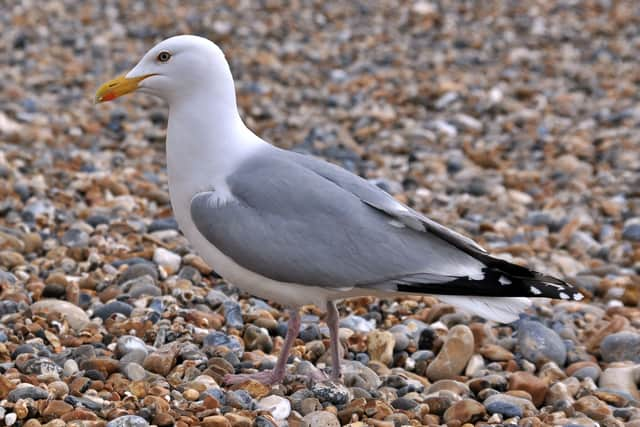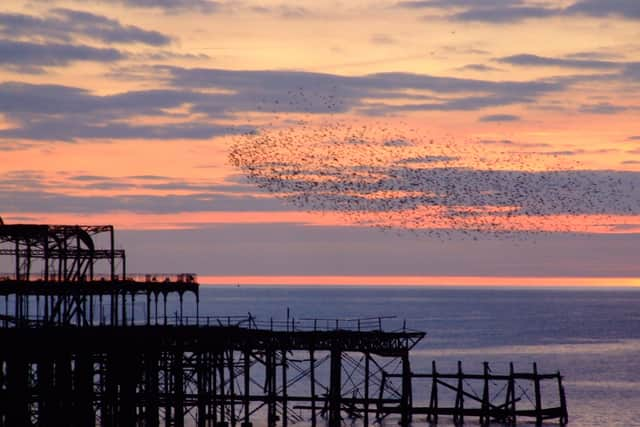Less wildlife than previously, but we seem to treat it better


The other evening, I was standing by the corner of Market Street and Nile Street when a fox came strolling by, practically brushing me with its bushy tail.
It seemed so domesticated, so casually at home there, that I imagined at first it was a dog. I watched it disappear under some tables by the Pump House. Five minutes later, I saw it emerge from Union Street into Ship Street. It must have toddled through The Lanes, still thronged at that hour. Bold, insouciant, assimilated.
Advertisement
Hide AdAdvertisement
Hide AdUp in Varndean Park, there is apparently another fox so laid-back it will 'join you on a stroll, trotting along beside you, for all the world as if he's a dog'.


The wildlife of our city, certainly on the seafront where I live, is a bit limited these days. Urban foxes and urbanised herring gulls are its principal components - scavengers both. On the pier in summer, screeching young birds besiege the fish restaurant, hoping to snatch or be thrown fast-food, when they should by nature be learning to fishinthesea.Ipreferthesmaller, quieter, black-headed gulls, less prominent here, with their more natural lifestyle.
You see a few crows around, occasionally a flickering flight of pied wagtails passes my window, blackbirds nest up the street, and then there are the famous murmurations of starlings, though even they seem reduced. Cormorants used to fish from the West Pier; peregrine falcons nest on Sussex Heights; there are badgers in gardens and cemeteries.
In addition to such green spaces as the Pavilion Gardens (where grey squirrels dart in the shrubbery), St Ann's Well Gardens, Queen's Park, and Preston Park, there are several local nature reserves dotted around, including Wild Park (popular for butterflies, and with a winter roost of 300 magpies), Whitehawk Hill, Waterhall, Withdean Woods, Beacon Hill, and Ladies' Mile, where wildlife can thrive.
Advertisement
Hide AdAdvertisement
Hide AdBut I suspect it is all rather muted from what it was in Victorian times. And we are certainly kinder than they were back then. In those days, foxes lived on the Downs, not in the city, and they were hunted by the local subscription packs (while the Brighton Harriers would kill up to two dozen hares in a day).


As for gulls, the old naturalists are curiously quiet about them actually being in the town. Richard Jefferies, for instance, says in 1884: 'It is curious that a seagull can generally be observed opposite the Aquarium; when there is no seagull elsewhere along the whole Brighton front there is often one there.Young gulls occasionally alight on the roof, or are blown there.' And: 'On a March morning two gulls came up from the sea.' Mary Merrifield records in 1860 that a tamed gull 'may sometimes be seen with its wing cut, in gardens, where it is useful in devouring slugs and snails'.Wedon'tdothatnow,either.
Studying such authorities, I learn that porpoises once frolicked off the groynes, kestrels perched on our roofs, rare moths could be taken in the London Road, nightingales sang in Queen's Park and Brunswick Square, while 'in winter and spring there are rooks everywhere', nesting in prodigious numbers by the Pavilion (350 were shot in Stanmer Park one day in 1855). Ravens and choughs nested in the cliffs, snipe were shot near the racecourse, while so many swallows congregated in one location that 'the boys amuse themselves by knocking them down with stones'. Untold thousands of wheatears and skylarks were netted for restaurant consumption and thousands of goldfinches caged. Hoopoes, sea-eagles, ospreys, avocets, phalaropes, stormy petrels were all to be found near Brighton - and usually they got shot and stuffed.